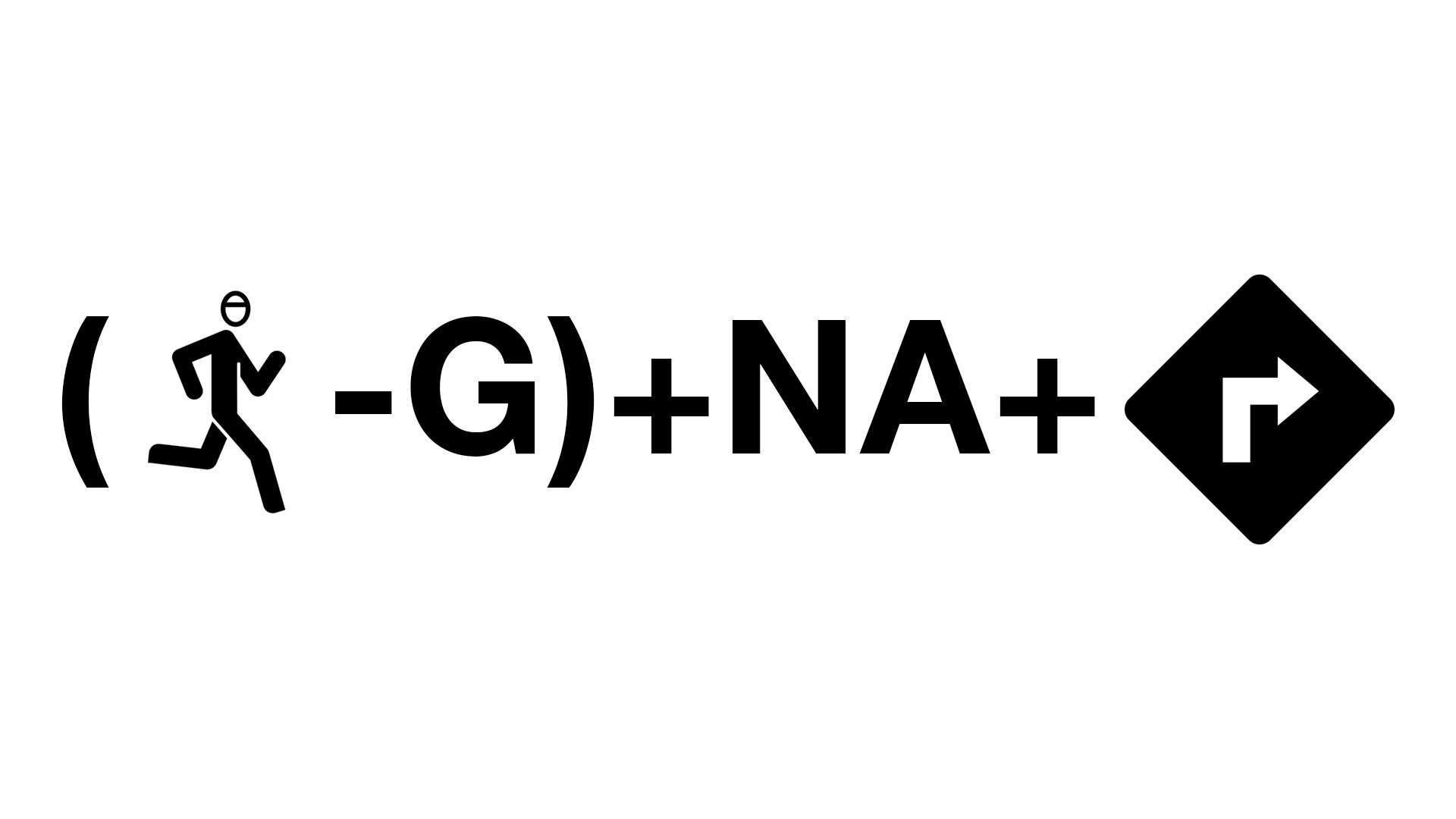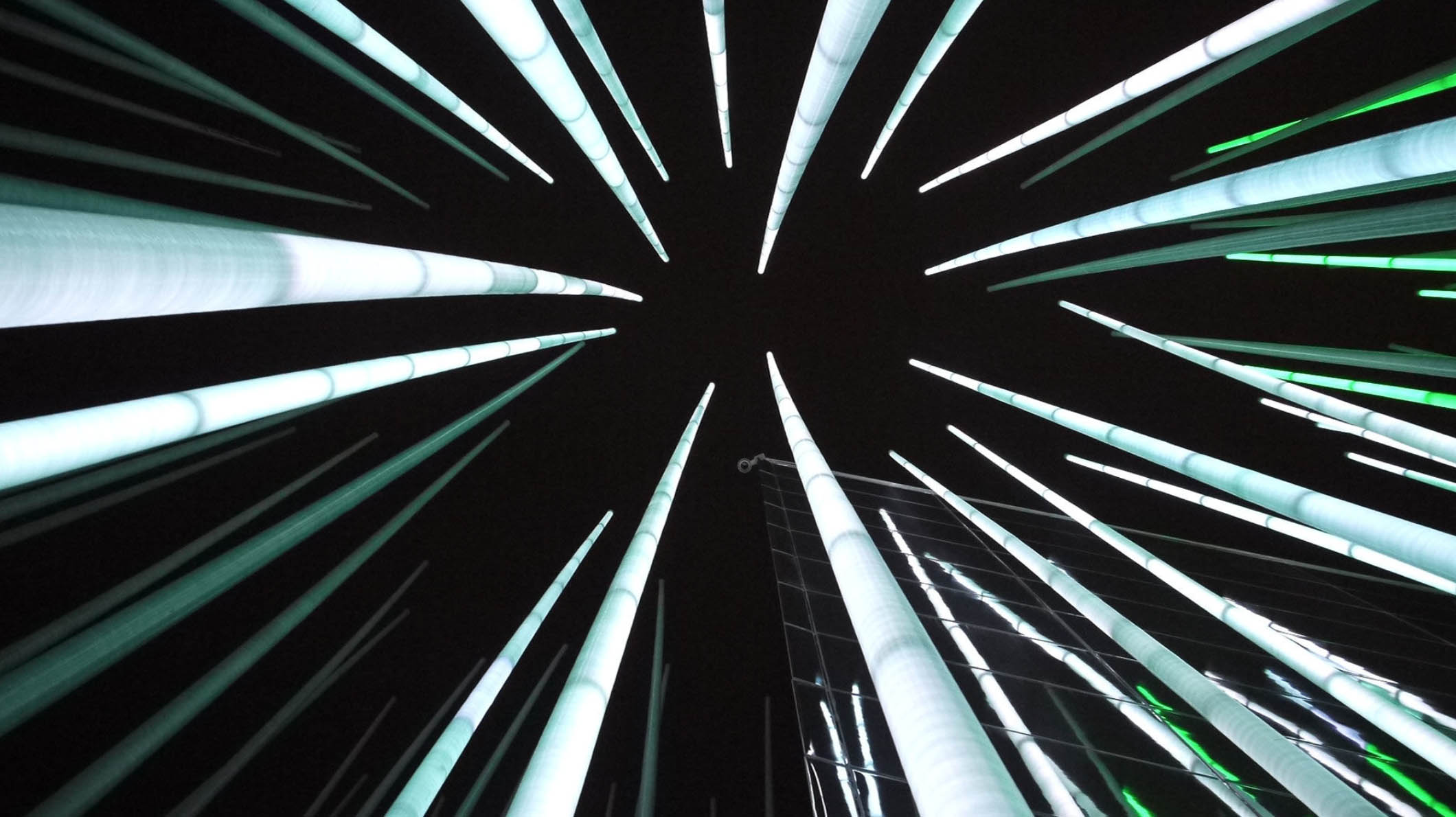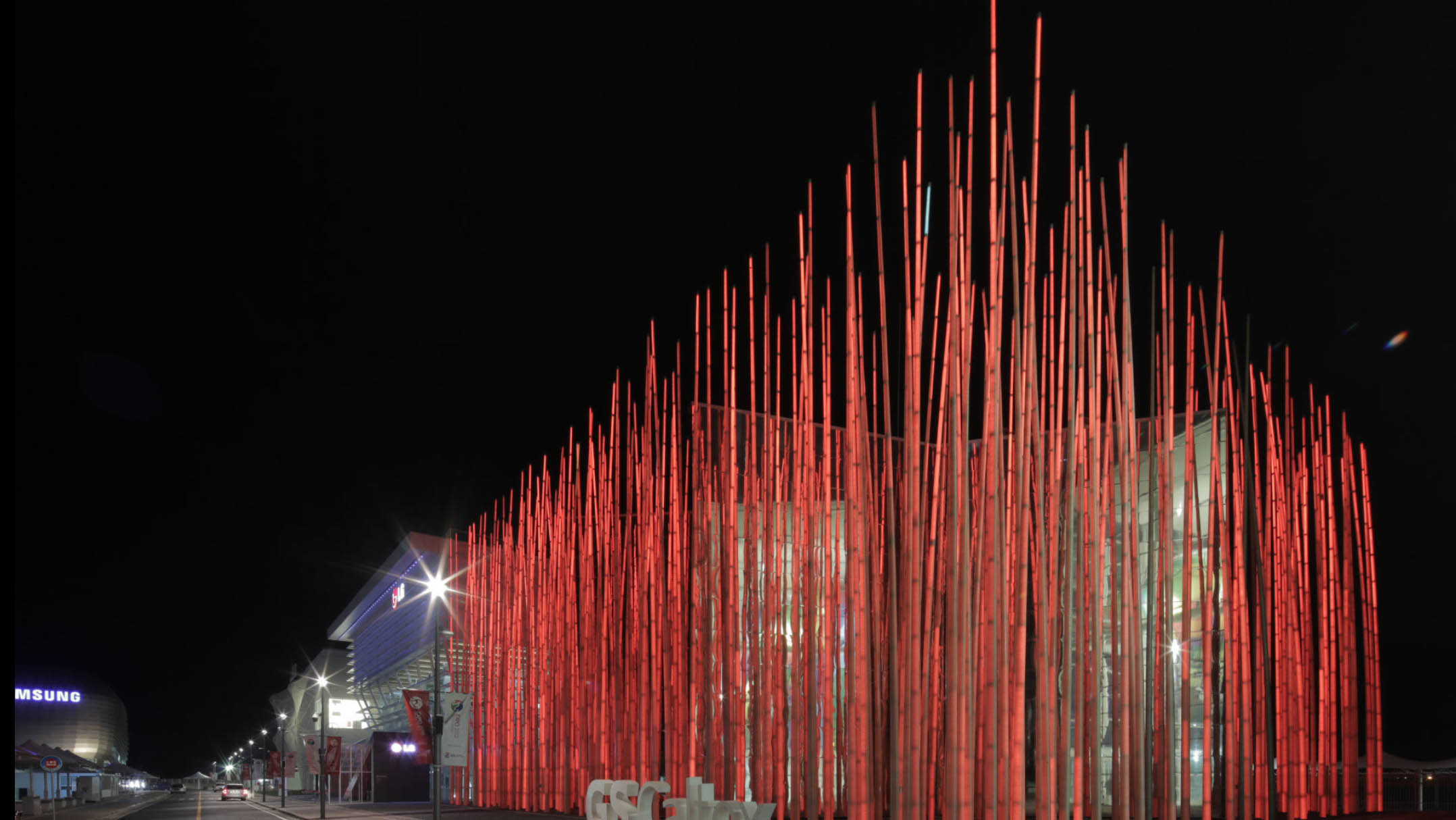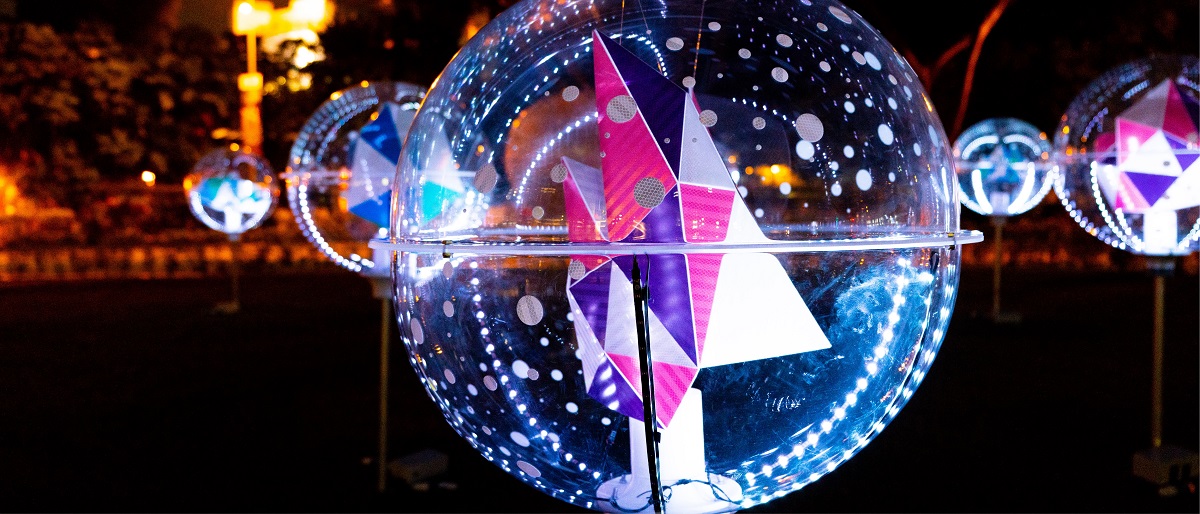
Orbit by LiteWerkz X 3M
This installation occupies a fairly large area, with transparent orbs/spheres lit up arranged around a fairly larger sphere in the center. The idea is to liken the space to that of the solar system in space hence the name ‘Orbit’. The main form of interaction would be that audiences are invited to touch/move/spin the spheres. The spheres/planets would respond to those movements and touch by changing its light colour or flashing in different light patterns.
The installation offers audiences an immersive experience due to its set-up and scale. Just entering the space and looking at a field of lit up, semi-floating spheres was a beautiful sight. While visiting the installation, there were many others (mostly kids) playing with the installation and from a macro perspective, the lights flashing all at different times and spinning at different speeds creating a diverse imagery for audiences to behold. In a sense, while audiences are interacting with just a single sphere, there are also changing how the installation is being perceived as a whole as well.
I think the intention created for the audiences was to invoke that sense of wonder and awe at the unchartered beyond of being in Space. Likening the experience to that of orbiting and playing amongst the shining stars.
Upon a closer study of each sphere, I was able to identify that each sphere was mostly made up of LED strips attached within and I would think a motion sensor that picks up on the movement made to the sphere. The electrical circuits and wiring are hidden beneath the sphere in the rod that holds it in place which connects the sphere to the electrical plug and supply.
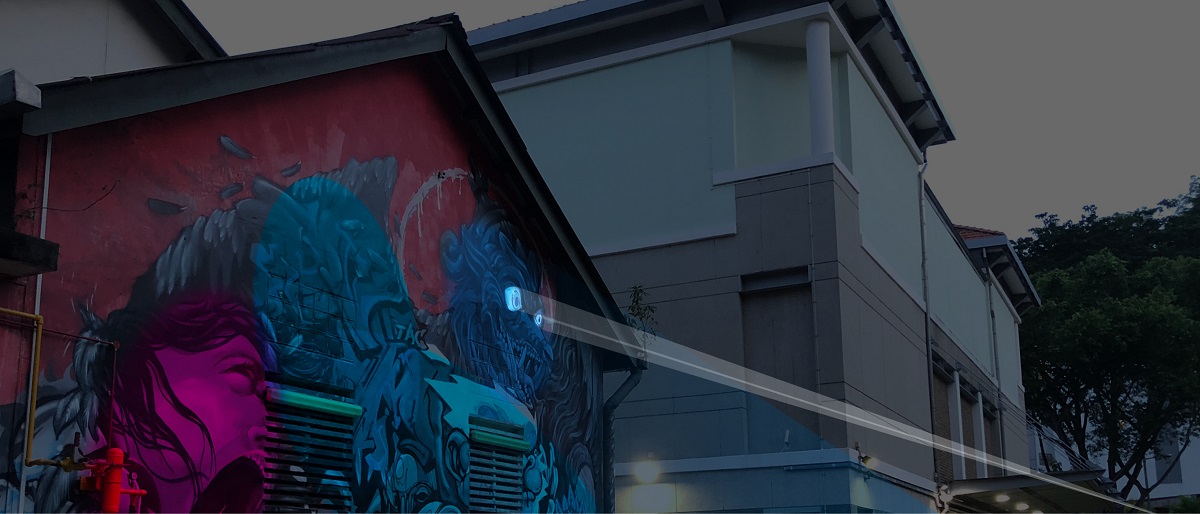
Graffiti Alive by Arup
So, having seen the critiques made by others in the class, I decided to choose an installation less spoken of and also an installation I felt was underwhelming compared to the other exhibits at Night Lights. Maybe from here I could draw some learning opportunities of some points to consider in my final project.
Situated at Armenien Street (beside the Substation), Graffiti Alive is a location specific installation that makes use of the graffiti art works along Armenien street and through motion sensors and lights, allow audiences to experience these works differently and see it in a new light (pun intended).

As I was visiting the installation, I saw a whole bunch of bulky equipment at the start and end of the street, accompanied by bright lights being cast on the graffiti wall. I did not quite understand the exhibit or the workings of it until I spoke to one of the volunteers present that I was suppose to work through the street and as I walked, the lights on the wall would then change colours and respond. I tried walking back and forth the street but there were minimal changes to the lighting. (It could have been due to the fact that there were others visiting the exhibit and could have messed up with the motion sensors)
I think the intention of the artist was to allow a personal experience for the audience to view and observe each graffiti art work in a new way and also provide some form of exposure to the street art scene in Singapore as Art like graffiti could only be enjoyed in the day due to lighting. By illuminating the space, the Artist wanted these works to be viewed and enjoyed in the night as well.
The set-up of the space was fairly elaborate with two huge balloon-shaped equipment (which I suppose is part of motion sensors) at the start and end of the street. As well as RGB spot lights set up opposite the wall. There were other smaller motion sensor devices placed along the wall as well.
Overall, I felt this installation was underwhelming as I thought that the artist would attempt to use some form of projection mapping on the wall to make the graffiti work come ‘alive’. I think that would allow me to experience the graffiti work differently instead of just different RGB lights cast on the artworks at different times as I walk across. Another would be how to best make use of motion sensors. I think it would be best to consider how people would and could they interact with the artwork and ensure that the system (the processes) would still work regardless. I wasn’t sure how the motion sensors would respond to the influx of a higher number of people and how the light cast on the wall would change as a result. But I suppose the bright lights did draw my attention over to this exhibit, but overall I still felt that it missed the mark for me compared to the other exhibits.



